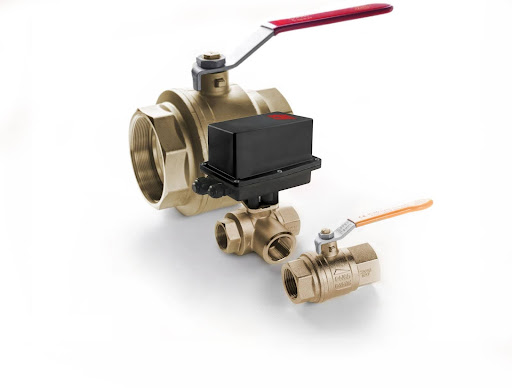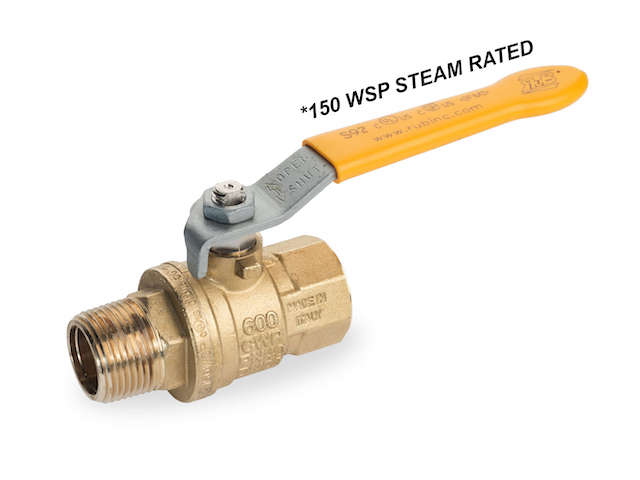
Understanding the key differences between actuated and manual ball valves
Ball valves, including both actuated and manual ball valves, are essential components in modern fluid control systems, offering precise shut-off and regulation of liquids and gases. While all ball valves share the same fundamental design—a rotating ball with a central bore that controls flow—the way they are operated distinguishes manual models from actuated ones.
Understanding these differences is critical when choosing the right valve for your system because the choice directly impacts safety, energy efficiency and maintenance requirements. In safety-critical or high-precision environments, selecting the right actuation method can help reduce risks and optimise overall system performance. RuB Inc. manufactures both manual and actuated ball valves, engineered to provide durability, accuracy, and reliability across a wide range of applications.
What are manual ball valves?
Manual ball valves are hand-operated devices designed to control the flow of fluid through a pipeline. A handle or lever is connected to a stem, which in turn rotates the internal ball. The ball features a cylindrical bore that, when aligned with the pipeline, allows fluid to flow freely, while a simple 90-degree turn of the lever moves the bore to a perpendicular position, completely stopping the flow. This smooth mechanism ensures fast and reliable control of liquids and gases with minimal effort.
Thanks to this efficient yet straightforward design, manual valves are ideal for systems that require only occasional operation—such as plumbing, gas distribution or smaller industrial setups. Their compact form and mechanical simplicity make them cost-effective, easy to install and low-maintenance. Popular models from RuB Inc. include the S.92, S.95, T.292, and T.242 series for potable water applications, along with the S.35 high-pressure mini valve, offering versatility across a range of uses.

What are actuated ball valves?
Actuated ball valves perform the same core function as manual ones, but their movement is controlled automatically by an actuator instead of a hand lever. The actuator—either electric or pneumatic—is mounted on the valve stem, allowing for remote operation or full automation via PLCs, switches, or integrated control systems.
The actuated ball valve function provides greater precision, consistency and safety, especially in complex or high-frequency applications. These valves are widely used in industries that demand automated or remote control, such as water treatment, chemical processing, food and beverage production, and HVAC systems. RuB Inc. offers several actuated models, including the S.6439, S.7341, and T.264, all designed for reliability and long-term operation in demanding conditions.

Actuated ball valves vs manual ball valves: performance, cost and maintenance
Choosing between manual and actuated ball valves requires a strategic assessment of how the actuation method impacts the system’s operational goals, total cost of ownership and maintenance profile.
|
Feature |
Manual Ball Valves |
Actuated Ball Valves |
|
Operation |
Physical hand-operated lever (90° turn). |
Automatic operation via electric or pneumatic actuator. |
|
Control |
Direct, intuitive operation. |
Remote control, highly precise, and consistent. |
|
Cost |
Lower upfront cost. |
Higher initial cost due to the actuator component. |
|
Maintenance |
Minimal; mostly visual inspection. |
Requires periodic inspection and maintenance of the actuator. |
|
Reliability |
Excellent for basic, low-cycle use. |
Unmatched for demanding, high-frequency, and continuous use. |
While manual valves are cost-effective and simple for small systems, actuated valves, though more expensive and requiring specific actuator maintenance, deliver long-term value through enhanced safety, process consistency and seamless integration with industrial automation.
Applications and value proposition of manual and actuated ball valves
The key differentiator is where each valve type delivers the most value.
Manual ball valves are the best fit for systems where human intervention is simple, quick and infrequent. Their ease of use and low maintenance make them practical solutions when system complexity is low and hands-on control is sufficient.
- Common applications: domestic plumbing, pneumatic control systems, fire safety installations, and light industrial environments.
- Advantage: they reduce upfront costs and simplify maintenance, making them ideal for budget-conscious or low-traffic systems.
Actuated ball valves excel in complex or industrial environments that demand continuous cycling, high precision, remote operation, or safety mechanisms. Their ability to integrate with PLCs and other control systems is essential for modern, optimized processes.
- Common Applications: automated production lines, chemical dosing stations, irrigation systems, marine cooling lines, and Industry 4.0 applications.
- Advantage: they ensure consistent performance, enhanced safety, and improved productivity in systems where human access is limited or where precise, repeatable control is critical.
Why choose RuB Inc.
RuB Inc. designs both manual and actuated ball valves with a focus on quality, precision and longevity. Actuated models are built with reinforced construction to withstand high pressures and continuous operation, while manual models offer simplicity and durability for everyday use. Every valve is manufactured to meet strict international standards and undergoes rigorous testing to guarantee sealing integrity and performance.
Looking for expert guidance on selecting the right valve? Contact RuB Inc. for personalized assistance and discover the perfect balance between automation, performance, and reliability for your system.